
hotline:
17715390137
Tel/Wechat:
18101240246 (Technology)
0512-68565571
Email:mxenes@163.com (Sales Engineer)bkxc.bonnie@gmail.com
Scan the code to follow or search the official account on WeChat:
2D Materials Fronrier After paying attention,
click on the lower right corner to contact us,
Enter enterprise WeChat.
Professional Services Online

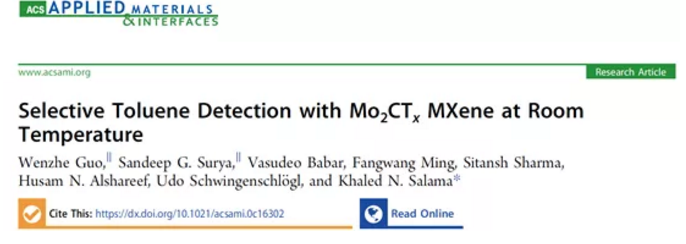

Air pollution is one of the most pressing problems facing humans all over the world. At present, the detection of toxic gases has become essential for environmental monitoring, industrial safety management and medical applications. There are different gas sensing technologies based on different sensing platforms; these devices include capacitive devices, resistive devices, quartz crystal micro-balance sensors, solid-state field effect transistors and organic field effect transistors. In particular, among all toxic gases, volatile organic compounds (VOCs) are posing an increasing threat to the environment and human health due to their toxicity and volatility. Researchers have used a variety of sensors and classification models to detect VOCs. Toluene is considered to be one of the most dangerous VOC pollutants in the air and is a major threat to human health. Even if the inhaled amount is very low, it can cause dizziness, confusion and color vision problems. In addition, due to the carcinogenic properties of nitrotoluene, long-term exposure may cause respiratory cancer. The toluene biomarker was found in the breath of smokers, and its concentration was many orders of magnitude higher than that of non-smokers. Since breath analysis has become one of the most important non-invasive methods in disease diagnosis, monitoring and measuring the concentration of toluene in the breath can be used as an effective method to identify smokers and non-smokers and monitor toluene exposure. In addition, there are reports that toluene has an acute effect on the central nervous system, and it acts as a depressant in the central nervous system. Therefore, the detection of toluene is of great significance for improving medical care. Among the existing gas sensors, metal oxide-based sensors are the most promising candidates for toluene detection. The application of machine learning algorithms can solve the problem of poor selectivity of metal-based gas sensors. However, metal oxide sensors need to work at high temperatures, mostly between 300°C and 500°C, which limits their role in real applications.

Recently, Professor Khaled N. Salama of King Abdullah University published a research paper titled: Selective Toluene Detection with Mo2CTx MXene at Room Temperature in the internationally renowned academic journal ACS Applied Materials & Interfaces, in order to explain the experimental results and reveal potential perceptions Mechanism, this paper uses an ab initio simulation based on density functional theory to study the interaction between Mo2CTx and VOC molecules. The surface functional groups O, OH and F were modeled as Mo2CTx respectively, and the reaction of the VOCs measured in the experiment was evaluated. First calculate the adsorption energy between Mo2CTx and VOCs. Then, the current and voltage characteristics are simulated to determine the observed sensitivity and selectivity of the device, and to provide guidance for improving device performance.

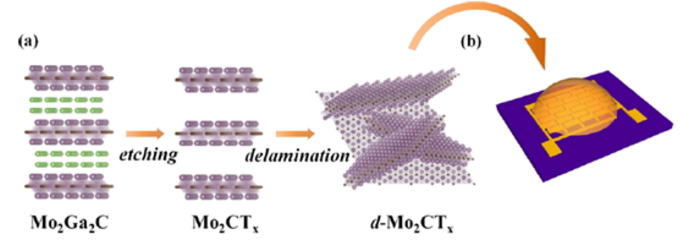
Figure 1. Material preparation and schematic diagram of device preparation.
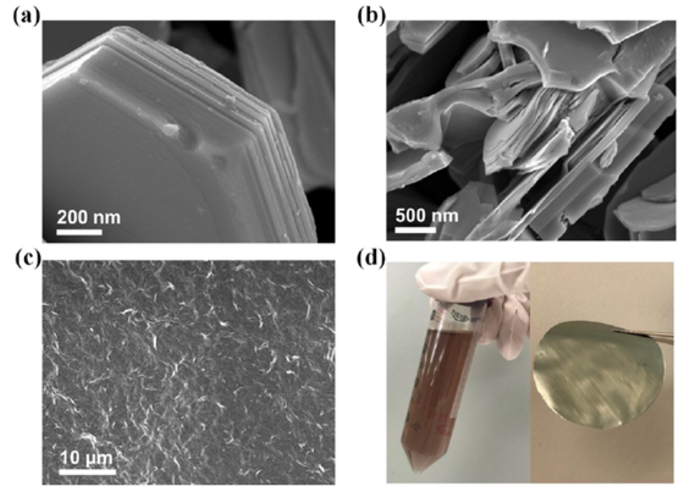
Figure 2. SEM characterization of the material.
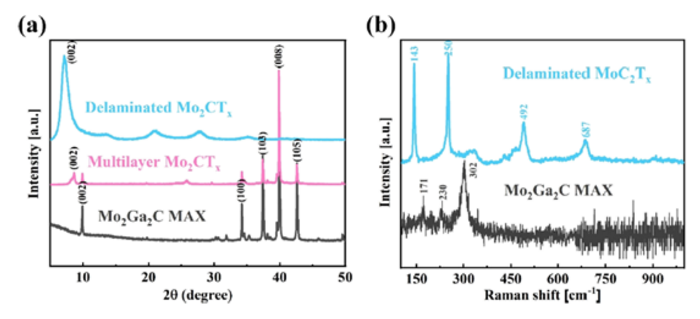
Figure 3. XRD characterization of materials.
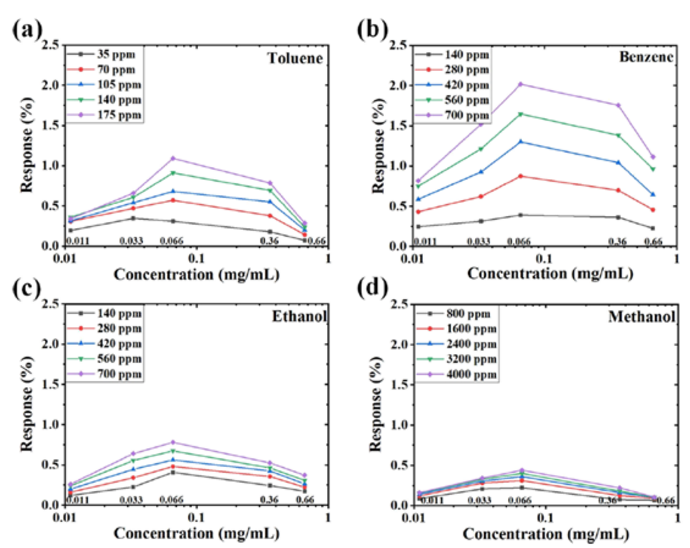
Figure 4. The sensor response of VOCs at different Mo2CTx concentrations was measured.
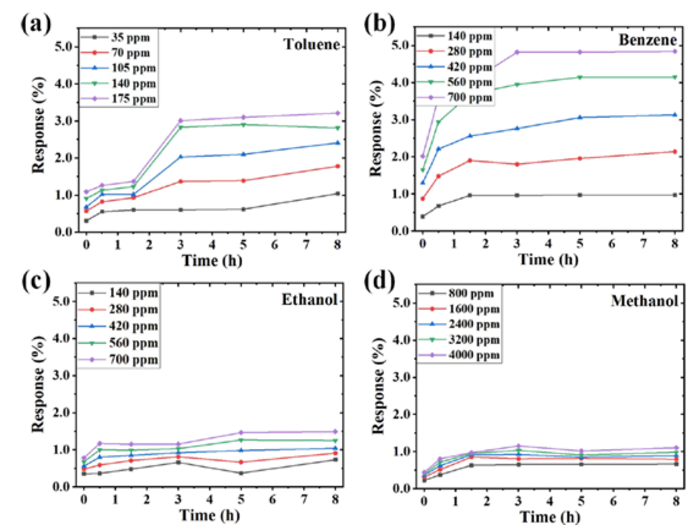
Figure 5. The sensor response of VOCs under different ultrasound time was measured.
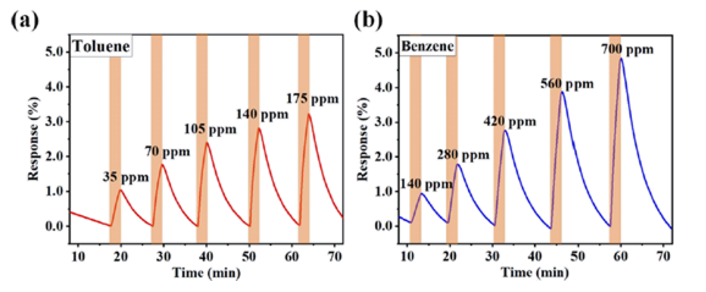
Figure 6. The transient response of Mo2CTx exposed to different VOCs for 2 minutes.
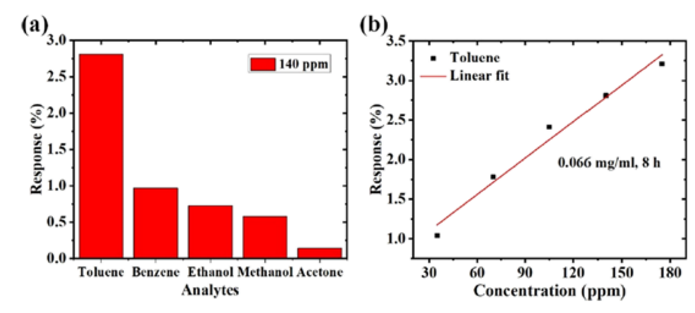
Figure 7. Device sensitivity.
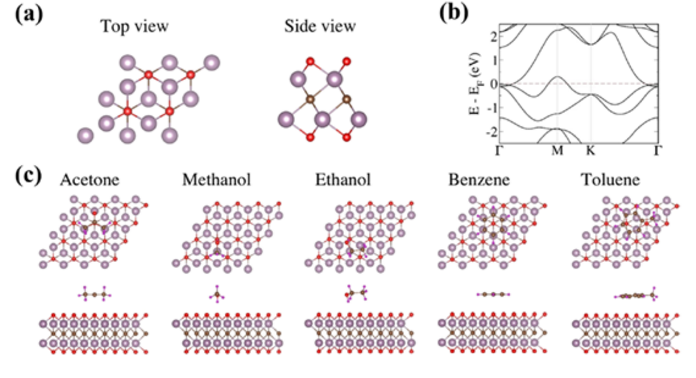
Figure 8. Theoretical simulation of gas adsorption.
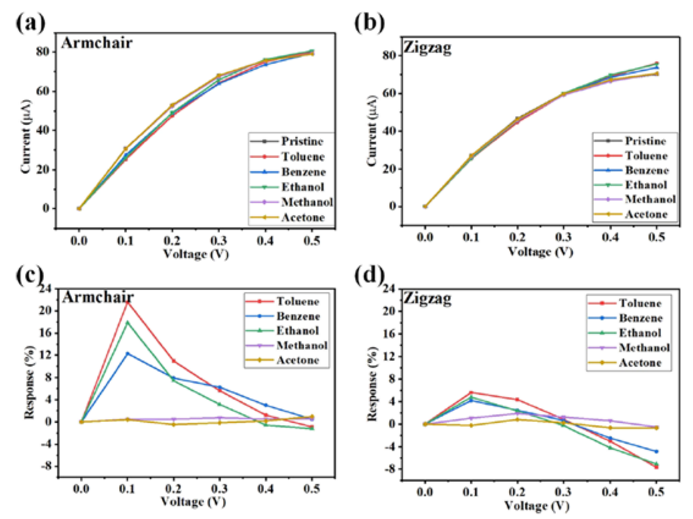
Figure 9. Current-voltage characteristics of the material before and after the adsorption of VOC molecules.

In summary, this article demonstrates a toluene chemical sensor based on 2D MXene Mo2CTx. We optimized the ideal concentration of MXene (0.066 mg/mL) and the ultrasound time (8 h) to obtain higher sensitivity. Compared with other VOCs, the micro-assembled sensor embedded in Mo2CTx sheet selectively recognizes toluene. The ab initio simulation of Mo2CTx is used to determine the strength of its interaction with various VOCs. The obtained current-voltage characteristics quantitatively agree well with the experimental data. The prepared sensor device showed a sensitivity of 0.0366Ω/ppm at 140ppm, a monitoring limit of 220ppb, and a linear response range of toluene concentration from 35 to 175 ppm. A 2-minute transient analysis of the device under different VOC concentrations confirmed the recovery of the sensor. Sensors based on Mo2CTx have broad application prospects in environmental monitoring.
Literature link:
https://doi.org/10.1021/acsami.0c16302.
Source: MXene Frontier
This information is from the Internet for academic exchanges. If there is any infringement, please contact us and delete it immediately

| Reminder: Beijing Beike New Material Technology Co., Ltd. supplies products only for scientific research, not for humans |
| All rights reserved © 2019 beijing beike new material Technology Co., Ltd 京ICP备16054715-2号 |